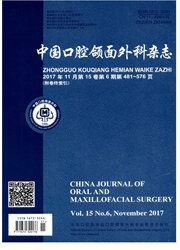

 中文摘要:
中文摘要:
目的 :研究温度对聚桂醇泡沫稳定性的影响。方法 :实验分为2组,预处理组—将盛有聚桂醇注射液的注射器及盛有空气的注射器通过三通管连接后,置于不同温度中(5、15、25、35、45、55和65℃),预处理10 min后,根据Tessari法制备聚桂醇泡沫。记录泡沫在室温(T=25℃)条件下的半衰期;后处理组—先在室温条件下制备聚桂醇泡沫,然后记录泡沫在不同温度下(5、15、25、35、45、55和65℃)的半衰期。利用SPSS 19.0软件包进行统计学分析。结果:在预处理组和后处理组,温度与聚桂醇泡沫的半衰期均存在负相关性(预处理组:r=-0.984,P〈0.05;后处理组:r=-0.969,P〈0.05)。T=25℃时,预处理组与后处理组之间的泡沫半衰期无显著差异(P=0.428〉0.05);T〉25℃时,预处理组半衰期高于后处理组;T〈25℃时,预处理组半衰期低于后处理组,差异均有显著性(P〈0.05)。结论:温度是影响聚桂醇泡沫稳定性的一个重要因素,泡沫制备前的温度与制备后的温度对泡沫稳定性的影响存在差异。
 英文摘要:
英文摘要:
PURPOSE: To investigate the influence of temperature on the stability of lauromacrogol foam for sclerotherapy. METHODS: Tessari method was used to generate foam. In preconditioning groups: two syringes were connected by a three-way stopcock, and one syringe was filled with lauromaerogol injection and the other with air. They were pre-cooled or pre-heated at different temperatures (5, 15, 25, 35, 45, 55 and 65℃) for 10 minutes. Then the foam was obtained and the foam half-time (FHT) was tested in ambient temperature (T=25℃). In postconditioning groups: the foam was produced in ambient temperature (T=25℃), while FHT was tested at different temperatures (5, 15, 25, 35, 45, 55 and 65℃). The pearson correlation test was used to analyze the effect of temperature on foam stability. Independent- samples t test was used to compare the foam half-time of foam in postconditioning group and preconditioning group using SPSS 19.0 software package. RESULTS: There was a negative relation between the temperature and FlIT in both preconditioning group and postconditioning group (preconditioning group: r=-0.984, P〈0.05; postconditioning group: r=-0.969, P〈0.05). There was significant difference of FHT between the two different temperature handling groups, except when the temperature was 25℃ (P〉0.05). FHT in preconditioning group was longer than postconditioning group when the temperature was more than 25℃ (P〈0.05). By contrast, FHT in preconditioning group was shorter than in postconditioning group when the temperature was less than 25℃ (P〈0.05). CONCLUSIONS: Temperature was an important factor to affect the stability of sclerosing foam, and the impact was different before or after the foam being produced.
 同期刊论文项目
同期刊论文项目
 同项目期刊论文
同项目期刊论文
 期刊信息
期刊信息
